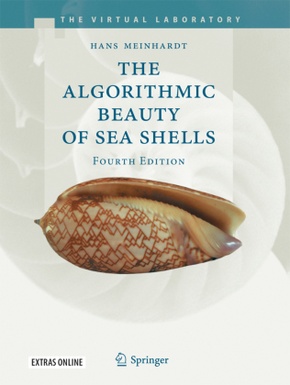
The Algorithmic Beauty of Sea Shells, w. CD-ROM
| Verlag | Springer |
| Auflage | 2009 |
| Seiten | 269 |
| Format | 21,7 x 2,5 x 28,7 cm |
| Gewicht | 1054 g |
| Artikeltyp | Englisches Buch |
| Reihe | The Virtual Laboratory |
| ISBN-10 | 3540921419 |
| EAN | 9783540921417 |
| Bestell-Nr | 54092141A |
The pigment patterns on tropical shells are of great beauty and diversity. Their mixture of regularity and irregularity is fascinating. A particular pattern seems to follow particular rules but these rules allow variations. No two shells are identical. The motionless patterns appear to be static, and, indeed, they consist of calci?ed material. However, as will be shown in this book, the underlying mechanism that generates this beauty is eminently dynamic. It has much in common with other dynamic systems that generate patterns, such as a wind-sand system that forms large dunes, or rain and erosion that form complex rami?ed river systems. On other shells the underlying mechanism has much in common with waves such as those commonly observed in the spread of an epidemic. A mollusk can only enlarge its shell at the shell margin. In most cases, only at this margin are new elements of the pigmentation pattern added. Therefore, the shell pattern preserves the record of a process that took place over time in a narrow zone at the growing edge. A certain point on the shell represents a certain moment in its history. Like a time machine one can go into the past or the future just by turning the shell back and forth. Having this complete historical record opens the possibility of decoding the generic principles behind this beauty.
Inhaltsverzeichnis:
Shell patterns - a natural picture book to study dynamic systems and biological pattern formation.- Pattern formation by local self-enhancement and long range inhibition.- Oscillations and traveling waves.- Superposition of stable and periodic patterns.- Crossings, meshwork of oblique lines and staggered dots: the combined action of two antagonists.- Branch initiation by global control.- The big problem: two or more time-dependent patterns that interfere with each other.- Triangles.- Parallel lines with tongues.- Shell models in three dimensions.- The computer programs.- Pattern formation in the development of higher organisms.- Pattern formation in development in which shell-related mechanisms are implicated.
